
One of our main priorities is to ensure universal access to, and informed use of effective contraception. Millions of people lack the knowledge and information to determine when or whether they have children, and they are unable to protect themselves against sexually transmitted infections (STIs).
Articles about Contraception
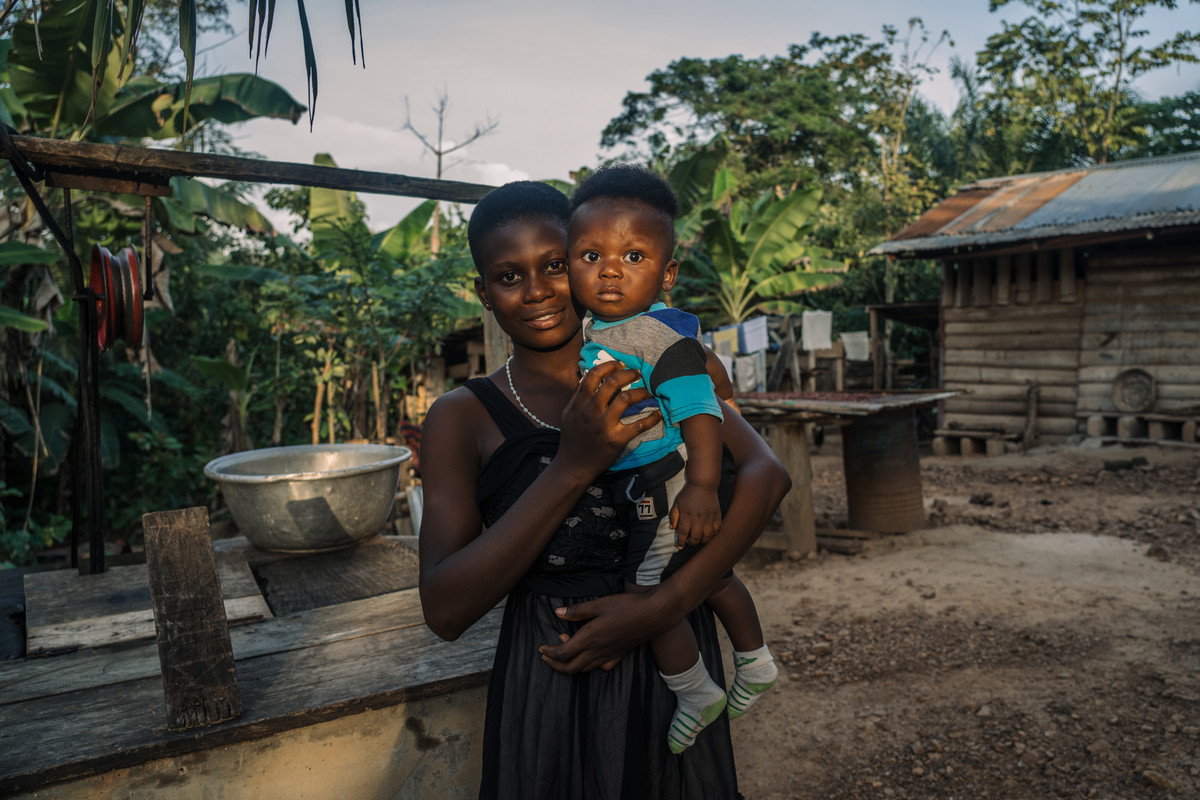
“Despite all those challenges, I thought it was necessary to stay in school"
When Gifty Anning Agyei was pregnant, her classmates teased her, telling her she should drop out of school. She thought of having an abortion, and at times she says she considered suicide. When her father, Ebenezer Anning Agyei found out about the pregnancy, he was furious and wanted to kick her out of the house and stop supporting her education. Getting the support she needed But with support from Planned Parenthood Association of Ghana (PPAG) and advice from Ebenezer’s church pastor, Gifty is still in school, and she has a happy baby boy, named after Gifty’s father. Gifty and the baby are living at home, with Gifty’s parents and three of her siblings in Mim, a small town about eight hours drive northwest of Ghana’s capital Accra. “Despite all those challenges, I thought it was necessary to stay in school. I didn’t want any pregnancy to truncate my future,” Gifty says, while her parents nod in proud support. In this area of Ghana, research conducted in 2018 found young people like Gifty had high sexual and reproduce health and rights (SRHR) challenges, with low comprehensive knowledge of SHRH and concerns about high levels of teenage pregnancy. PPAG, along with the Danish Family Planning Association (DFPA), launched a four-year project in Mim in 2018 aimed to address these issues. For Gifty, now 17, and her family, this meant support from PPAG, especially from the coordinator of the project in Mim, Abdul- Mumin Abukari. “I met Abdul when I was pregnant. He was very supportive and encouraged me so much even during antenatals he was with me. Through Abdul, PPAG encouraged me so much.” Her mother, Alice, says with support from PPAG her daughter did not have what might have been an unsafe abortion. The parents are also happy that the PPAG project is educating other young people on SRHR and ensuring they have access to services in Mim. Gifty says teenage pregnancy is common in Mim and is glad PPAG is trying to curb the high rates or support those who do give birth to continue their schooling. “It’s not the end of the road” “PPAG’s assistance is critical. There are so many ladies who when they get into the situation of early pregnancy that is the end of the road, but PPAG has made us know it is only a challenge but not the end of the road.” Gifty’s mum Alice says they see baby Ebenezer as one of their children, who they are raising, for now, so GIfty can continue with her schooling. “In the future, she will take on the responsibly more. Now the work is heavy, that is why we have taken it upon ourselves. In the future, when Gifty is well-employed that responsibility is going to be handed over to her, we will be only playing a supporting role.” Alice also says people in the community have commented on their dedication. “When we are out, people praise us for encouraging our daughter and drawing her closer to us and putting her back to school.” Dad Ebenezer smiles as he looks over at his grandson. “We are very happy now.” When she’s not at school or home with the baby, Gifty is doing an apprenticeship, learning to sew to follow her dream of becoming a fashion designer. For her, despite giving birth so young, she has her sights set on finishing her high school education in 2021 and then heading to higher education.
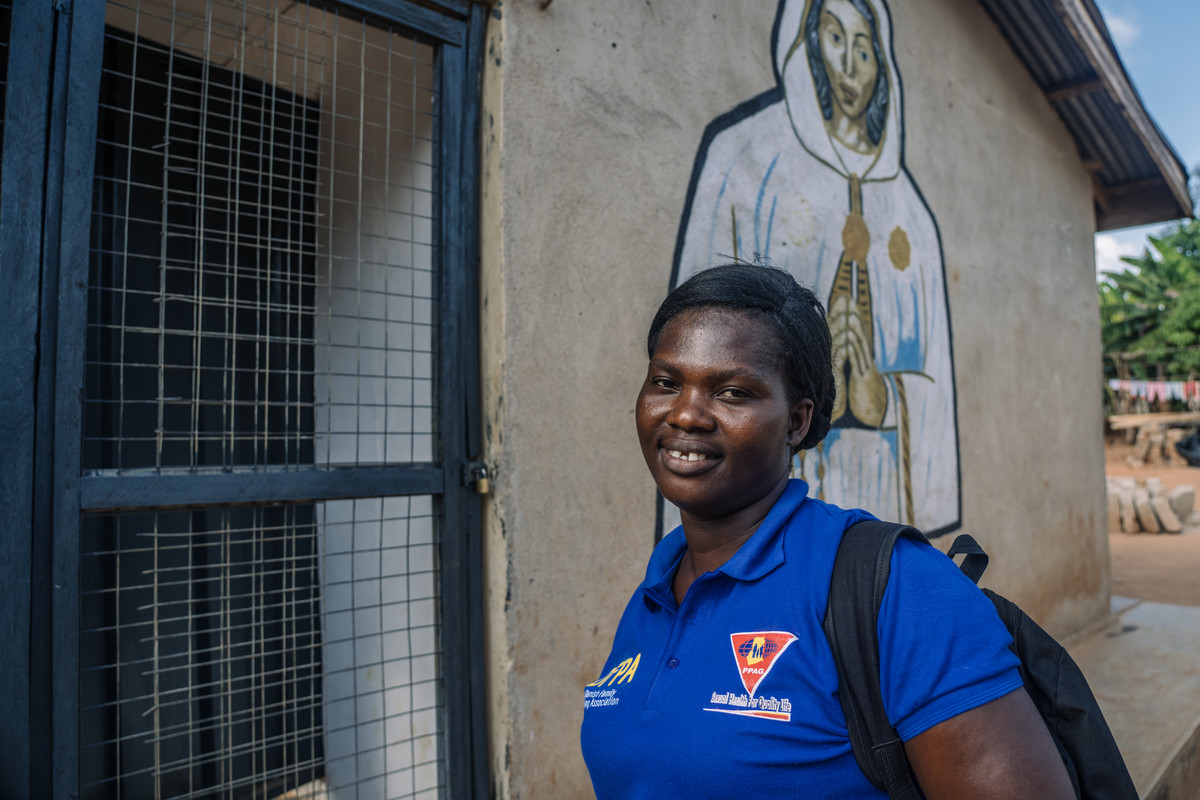
"They teach us as to how to avoid STDs and how to space our childbirth"
As the sun rises each morning, Dorcas Amakyewaa leaves her home she shares with her five children and mother and heads to work at a cashew factory. The factory is on the outskirts of Mim, a town in the Ahafo Region of Ghana. Along the streets of the township, people sell secondhand shoes and clothing or provisions from small, colourfully painted wooden shacks. “There are so many problems in town, notable among them [young people], teenage pregnancies and drug abuse,” Amakyewaa says, reflecting on the community of about 30,000 in Ghana. The chance to make a difference In 2018, Amakyewaa was offered a way to help address these issues in Mim, through a sexual and reproductive health rights (SRHR) project brought to both the cashew factory and the surrounding community, through the Danish Family Planning Association, and Planned Parenthood Association Ghana (PPAG). Before the project implementation, some staff at the factory were interviewed and surveyed. Findings revealed similar concerns Amakyewaa had, along with the need for comprehensive education, access and information on the right to key SRHR services. The research also found a preference for receiving SRHR information through friends, colleagues or factory health outreach. These findings then led to PPAG training people in the factory to become SRHR peer educators, including Amakyewaa. She now passes on what she has learnt in her training to her colleagues in sessions, where they discuss different SRHR topics. “I guide them to space their births, and I also guide them on the effects of drug abuse.” The project has also increased access to hospitals, she adds. “The people I teach, I have given the numbers of some nurses to them. So that whenever they need the services of the nurses, they call them and meet them straight away.” Access to information One of the women Amakyewaa meets with to discuss sexual and reproductive health is Monica Asare, a mother of two. “I have had a lot of benefits from PPAG. They teach us as to how to avoid STDs and how to space our childbirth. I teach my child about what we are learning. I never had access to this information; it would have helped me a lot, probably I would have been in school.” Amakyewaa also says she didn’t have access to information and services when she was young. If she had, she says she would not have had a child at 17. She takes the information she has learnt, to share with her children and other young people in the community. When she gets home after work, Amakyewaa’s peer education does not stop, she continues. She also continues her teachings when she gets home. “PPAG’s project has been very helpful to me as a mother. When I go home, previously I was not communicating with my children with issues relating to reproduction.” Her 19-year-old daughter, Stella Akrasi, has also benefitted from her mothers training. “I see it to be good. I always share with my friends give them the importance of family planning. If she teaches me something I will have to go and tell them too” she says.
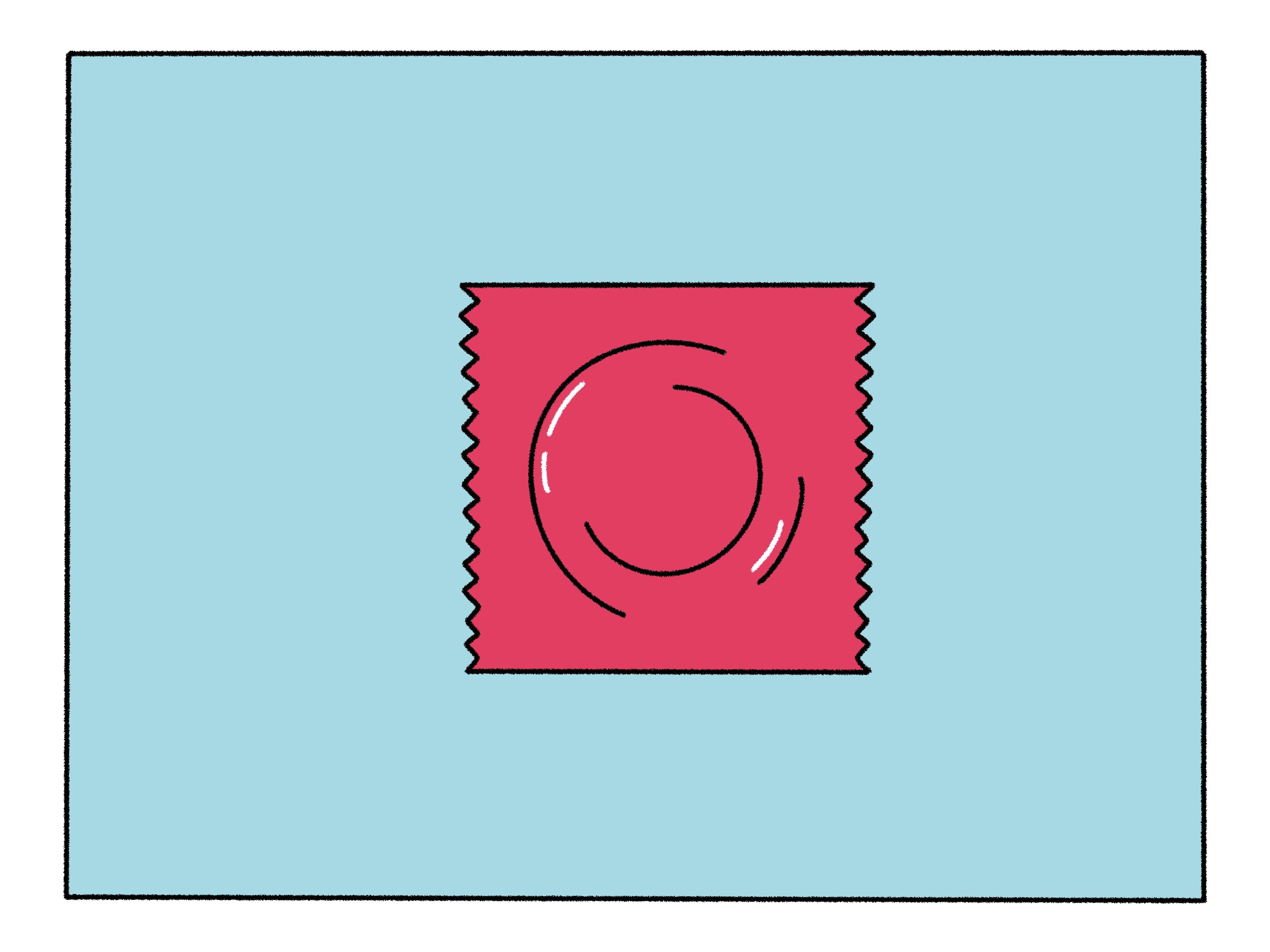
How to use an external (male) condom
What is a condom? A condom is a form of contraception, usually made from latex, that is used during foreplay or sexual intercourse to help protect against STIs (including HIV) and unintended pregnancies. Why use a condom? Condoms are the only form of contraception that prevents unintended pregnancies and protects you from STIs, including HIV. External (male) condoms are 87-98% effective, depending on what type you use and if you use them correctly and consistently. Condoms are recommended alongside another form of short or long form contraception, like an IUD or contraceptive pill. Learn more about other forms of contraception How to put on an external (male) condom Packs of condoms will always come with instructions, so be sure to read them beforehand. But if you’re in a rush, here are a few things to remember: Always check the expiry date on the condom. If it’s out of date then do not use it, as it is more likely to break. Check the packet has a certification mark, usually FDA, BSI, CE, ISO or Kitemark. A certification mark means they have been tested and have passed the required safety standards. The marks look like this: Be careful when you or your sexual partner open the condom. Avoid using your teeth or a sharp object as you risk tearing the condom. The condom should be put on the penis when it is erect (hard) and before the penis comes into contact with a sexual partner (vaginally, anally or orally). Once the condom has been removed from the packet, place it on the tip of the erect penis. Squeezing the tip of the condom, carefully roll it down to the base of the penis. If the condom will not unroll easily, it may be on the wrong way. If this happens, start again with a new condom as pre-ejaculatory fluid (aka "pre-cum") can contain sperm. Once it’s on properly, you’re good to go! Learn more about pre-cum and if it can cause pregnancy How to remove a male condom After ejaculation and with the penis still erect (hard), hold the condom at the base and carefully remove your penis from your partner’s body – if you do not remove your penis from your partner whilst it is still erect, there is a risk of sperm leaking or the condom falling off. Only completely remove the condom when you are no longer in contact with your partner’s body. Wrap the used condom in some tissue and dispose of it in the bin. Do not flush your condom down the toilet as this can have a negative impact on the environment. Remember you cannot use the same condom twice (even if you rinse it)! Learn more about some of the types of condoms available Using lubricant with a condom If you want to use lubricant (also known as lube), used a water-based one as oil-based lubricants can cause condoms to break. Remember to use it on the external area of the condom and/or on your partner’s genitals. Do not place lubricant directly onto the penis as this can cause the condom to slip off. Learn more about lubricant
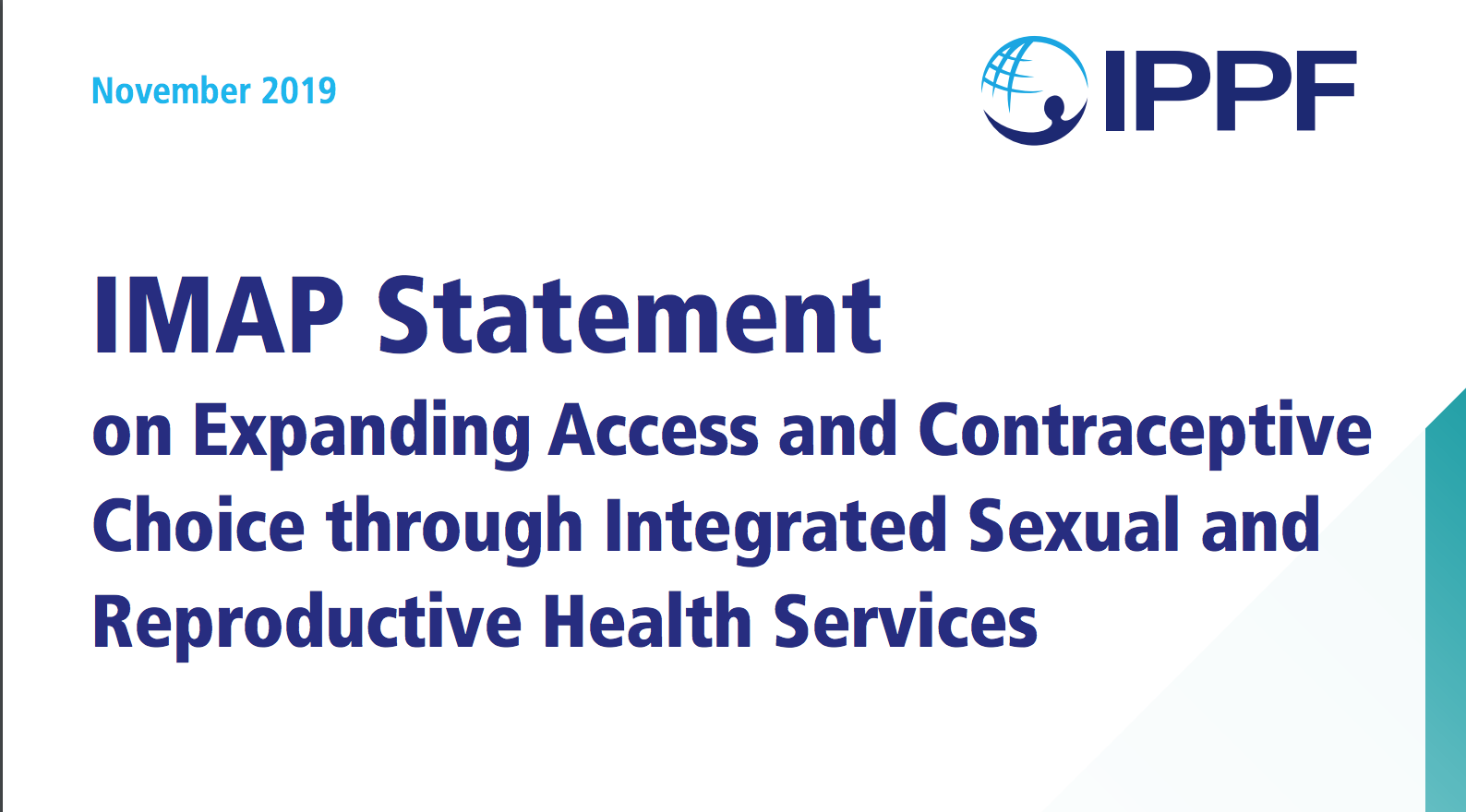
IMAP statement on expanding access and contraceptive choice through integrated sexual and reproductive health services
In 2018, IPPF endorsed the WHO/UNFPA Call to Action to Attain Universal Health Coverage Through Linked Sexual and Reproductive Health and Rights and HIV Interventions.13 This IMAP statement serves as a reminder of this call to action to ensure all people have access to comprehensive SRH services, including integrated contraceptive and HIV/STI services, provided through primary healthcare.
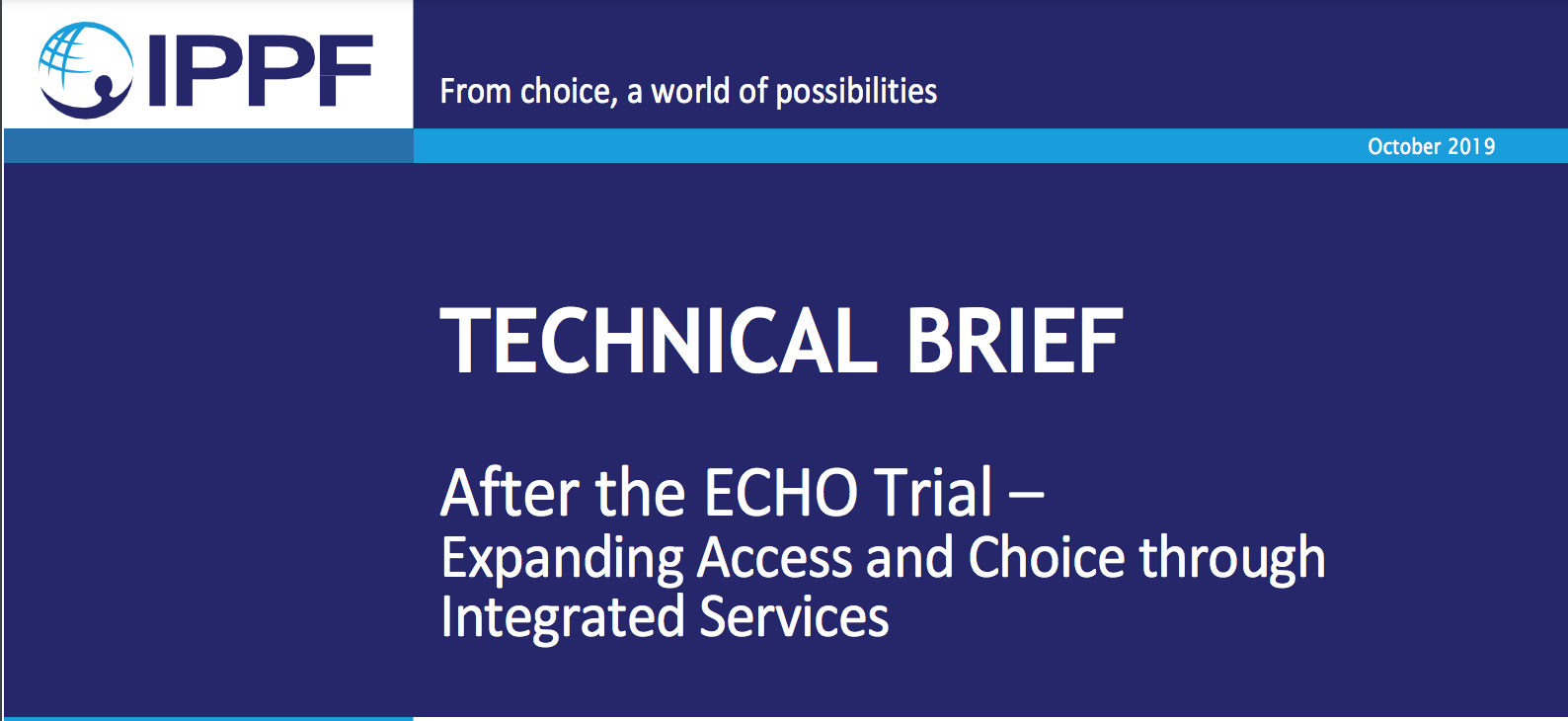
After the ECHO trial – Expanding access and choice through integrated services
Since the early 1990s, the evidence has been inconclusive as to whether using hormonal contraception increases women’s risk of acquiring HIV, particularly among progestogen-only injectable users. Observational studies indicated that women using progestogen-only injectable contraceptive methods may be at higher risk of acquiring human immunodeficiency virus (HIV). The Evidence for Contraceptive Options and HIV Outcomes (ECHO) trial finds no link between HIV acquisition and the use of DMPA-IM, progestogen implant, and non-hormonal copper IUD. For more information please see the technical brief on the ECHO trial. Following the release of the result of the ECHO trial and the WHO latest guidance statement and revised Medical Eligibility Criteria (MEC) for contraceptive use, IPPF developed a follow-up technical brief to support IPPF MAs and frontline service providers’ work regarding the provision of the integrated contraceptive, HIV and other STI programmes to expand access and contraceptive choice. For more information, please see the attached technical brief After the ECHO trial – Expanding access and choice through integrated services, available in English and French.
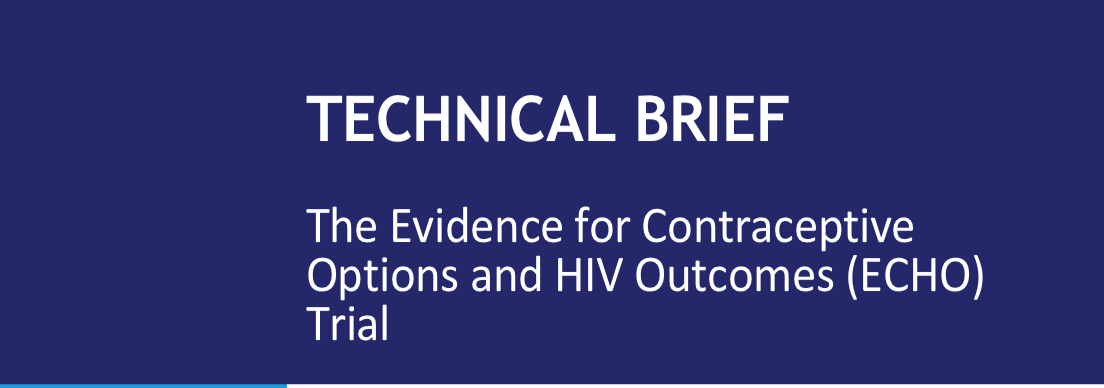
IPPF Technical Brief on the ECHO trial
Since the early 1990s, the evidence has been inconclusive as to whether using hormonal contraception increases women’s risk of acquiring HIV, particularly among progestogen-only injectable users. Observational studies indicated that women using progestogen-only injectable contraceptive methods may be at higher risk of acquiring human immunodeficiency virus (HIV). The ECHO trial finds no link between HIV acquisition and the use of DMPA-IM, progestogen implant, and non-hormonal copper IUD.
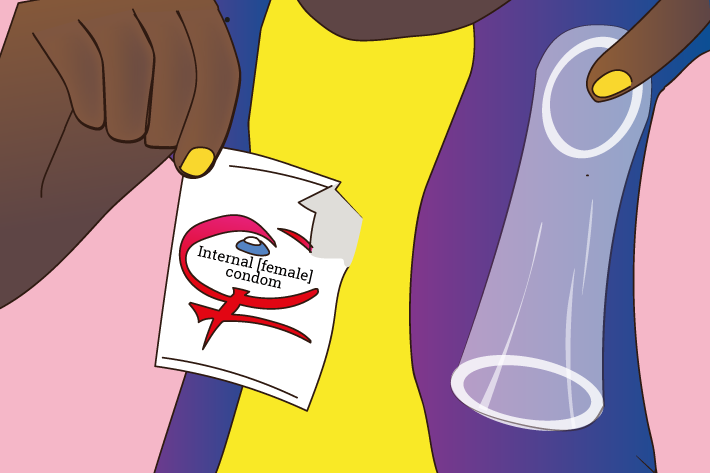
Condoms: which of these five is right for you?
Condoms have come a long way since the days of being fashioned from animal intestines (surprise: these are still a thing). They now come in all shapes and sizes – from textured to pre-lubricated to novelty glow-in-the-dark condoms – so there is something for almost everyone. That also means the ‘they don’t feel good’ excuse is no longer a reason not to use one! Why should I use a condom? Condoms have existed in some form or other for thousands of years, and were usually made from animal intestines – thankfully we have moved on since then (although lambskin condoms are still available but aren’t as effective as latex condoms at protecting you against STIs). Condoms are the only form of contraception that can protect you from HIV and STIs and are 87-98% effective for an external (male) condom and 79-95% effective for an internal (female) condom. Using a condom alongside another form of contraception (for example an IUD or the Pill) is the best way to protect against unintended pregnancy. With so many to choose from, we have listed five different types of condoms that you may want to consider the next time you’re getting intimate. 1.The latex condom Let’s start with the male latex condom. It comes in a smooth finish, non-lubricated and a number of sizes. It can be up to 98% effective when used correctly. For non-lubricated latex condoms it is recommended that you use a water-based lube as oil-based lubes can cause tears in the condom, which would bring the effectiveness of the condom down to about 0%. 2. The non-latex condom For those who have latex allergies, non-latex condoms are an alternative but are more likely to break than latex condoms, making them slightly less effective than latex condoms. Most non-latex condoms are made from polyurethane or polyisoprene, but you can also find ‘lambskin’ alternatives, made from lamb cecum, which is the pouch located at the beginning of a lamb’s large intestine! 3. The lubricated condom Whilst lubricated condoms come (obviously) pre-lubricated, the amount of lubrication used may not be enough for you and your partner. It is always advised to use extra water- or silicon-based lube. And remember, never use an oil-based lube with latex condoms. 4. The internal condom Previously known as the ‘female condom’, the internal condom can be used for both vaginal and anal sex. The effectiveness of the internal condom can vary depending on how often it is used. The effectiveness of the internal condom can range from 79% to 95% depending on use. Most internal condoms are non-latex and no, doubling up on an external and internal condom does not increase effectiveness – in fact, it’s strongly advised not to use both of these condoms at the same time as this may cause them to rip. 5. The textured condom Said to increase pleasure, textured condoms come in a variety of textures, from ribbed to dotted to anatomic (a mixture of both). The best way to find out if they work for you is to experiment with your partner or partners! Want to know more about different methods of contraception? Visit our contraception information page
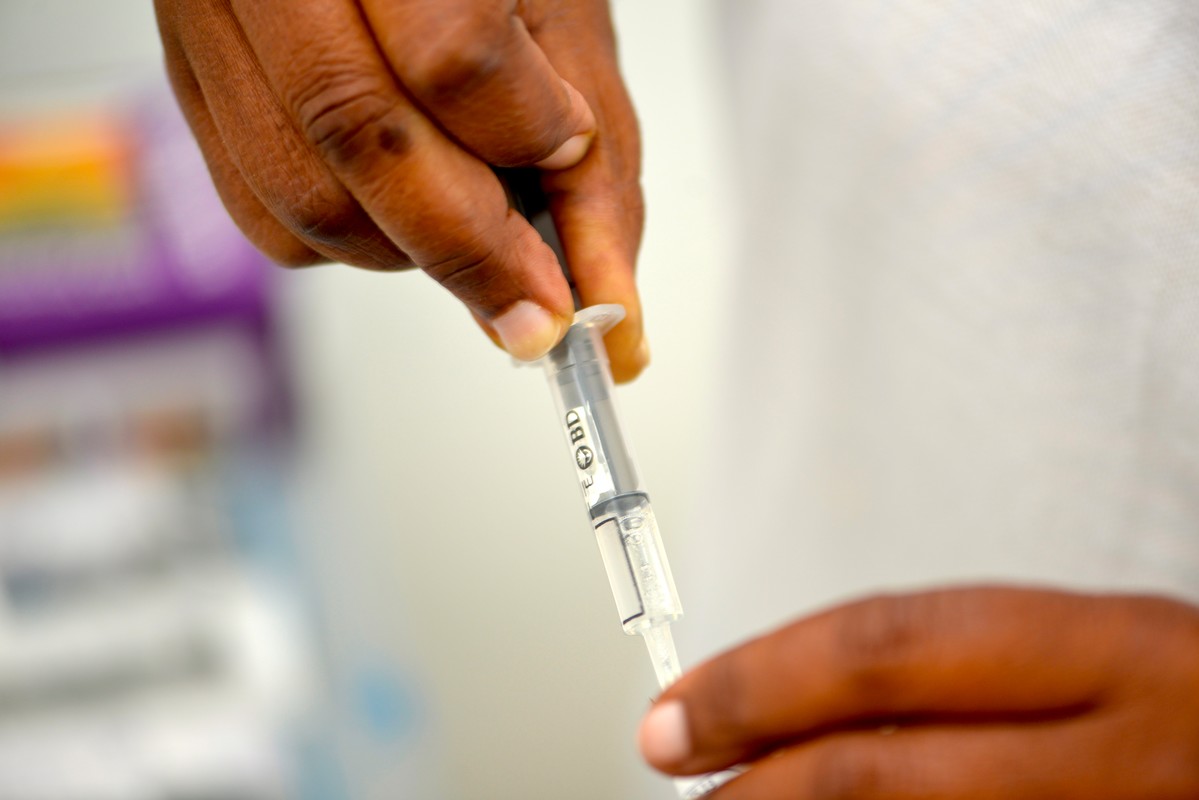
ECHO Trial results show urgent need for great efforts in HIV prevention
IPPF’s Director-General, Dr Alvaro Bermejo has welcomed the publication today (Thursday 13 June) of the results of the Evidence for Contraceptive Options and HIV Outcomes (ECHO) trial – but warned they show how much more must be done urgently to combat HIV acquisition and offer real contraceptive choice. The ECHO clinical trial compared three common methods of contraception – DMPA-IM, Jadelle Implant and Copper IUD - and whether any of them increased the risk of acquiring HIV among women and girls at high risk. It was conducted at 12 sites in four countries, across South Africa, Eswatini (Swaziland), Zambia and Kenya. More than 7,800 women took part in the study, for up to 18 months. The trial did not find a statistically significant difference in HIV risk between the contraceptive methods it evaluated. But during the trial 397 of the women who took part acquired HIV. Dr Alvaro Bermejo said: “This has been an extremely important trial and we are pleased to see the results published. We do need to analyse them in greater deal, but it is already clear that the high rates of HIV and STI infections among those women who took part - despite individualised prevention efforts - represent an urgent cry for the integration of sexual and reproductive healthcare and HIV prevention. The results do not point to DMPA causing the increase in the risk of HIV infection some had feared, but the study has drawn attention to the many women – and countries – who have, in reality, a very limited choice of contraceptive methods available and the problems that causes. We have to ensure that a range of contraceptive options and the best counselling is available to women and girls who seek to prevent pregnancy and to protect them from HIV infection. That requires more investment , more coordination and prioritisation of sexual and reproductive healthcare.”
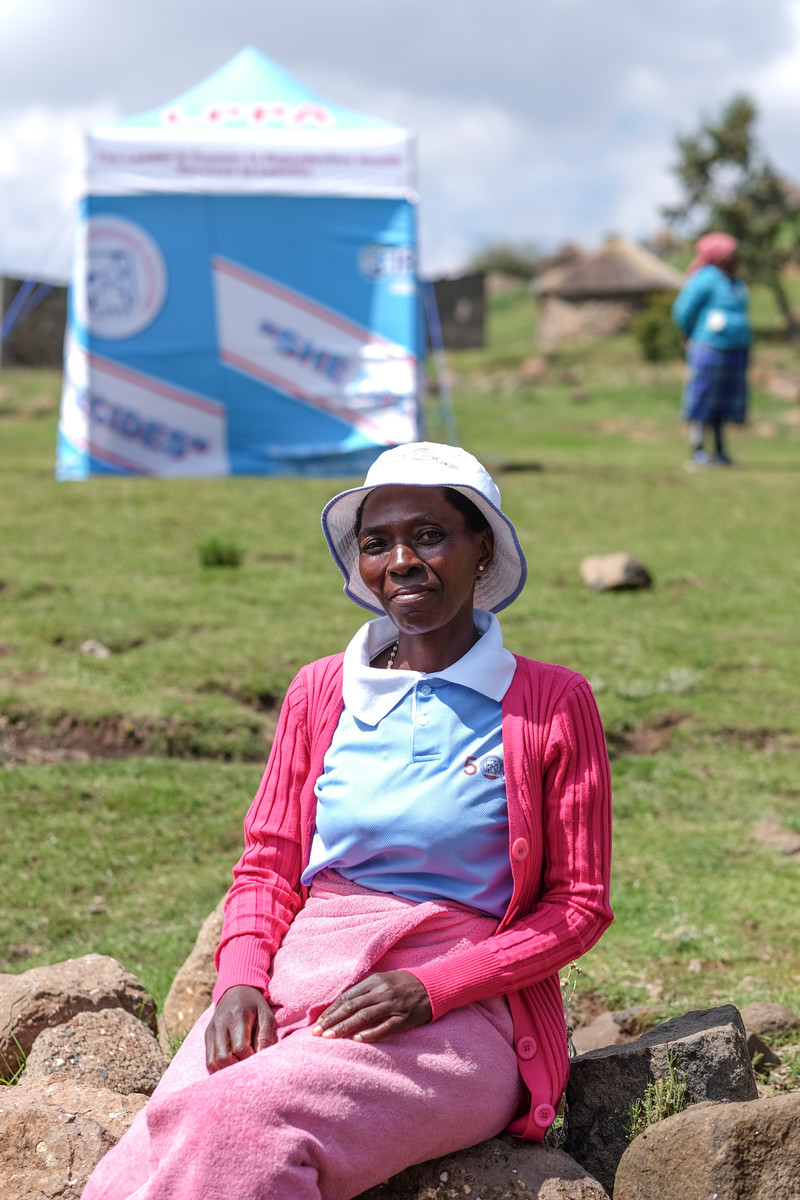
"I try to explain to the parents the importance of contraceptives"
When Raphel Marafan Kori’s husband died in 2001, she was left to fend for herself, in a largely patriarchal society. Now 45-years-old, she keeps busy and earns an income as a peer educator in Tsenekeng village in Lesotho’s Semonkong region. She goes door to door to counsel her neighbors and residents of the village in family planning options available. She’s been doing it for nine months and visibly brightens when she starts talking about the work. "I introduce myself, after that I explain to the people the services that we provide, the importance of the choices that we can make about contraceptives." She was appointed by the village chief, Makholu Mahao, to participate in a training provided by LPPA in the capital, Maseru and soon after, dove into her fieldwork. Some people immediately understand and welcome the offerings, she says, while others take some time. Protection & permission Now nine months into the work, she says the biggest issue facing her community is “that adolescents still need consent from the parents. And the parents seem to have a problem with that because in a way, [they think] it is allowing them, giving them the freedom to indulge in sex.” “Another way I can explain [is to] mention HIV testing here and to remind [parents] it's not only they're getting protection but also for them to help them plan for future." Going door to door Occasionally she’ll hold community gatherings, but mostly she has these conversations door to door. “I’m working very hard to make sure the children also engage in this for the future. It’s a challenge,” she admits. She herself comes to the mobile outreach post for family planning services, something she says helps break the ice when she is out in the community talking about family planning. She tells them she uses the pill because she is allergic to the injectable option offered here. “I get to talk to people because I can counsel them on HIV and AIDS daily to make them understand that just because you have HIV it's not the end of the world but you need to take your medication properly and life continues,” she explains proudly, sitting a few meters away from the She Decides tent with a line of women outside. Overall, she says she has benefitted as much from her work as the beneficiaries. “I engage with people. I also learned a lot, it educated me especially on the protection side because even myself before I was not aware of such information but now I've learned and I can give other people this information.”
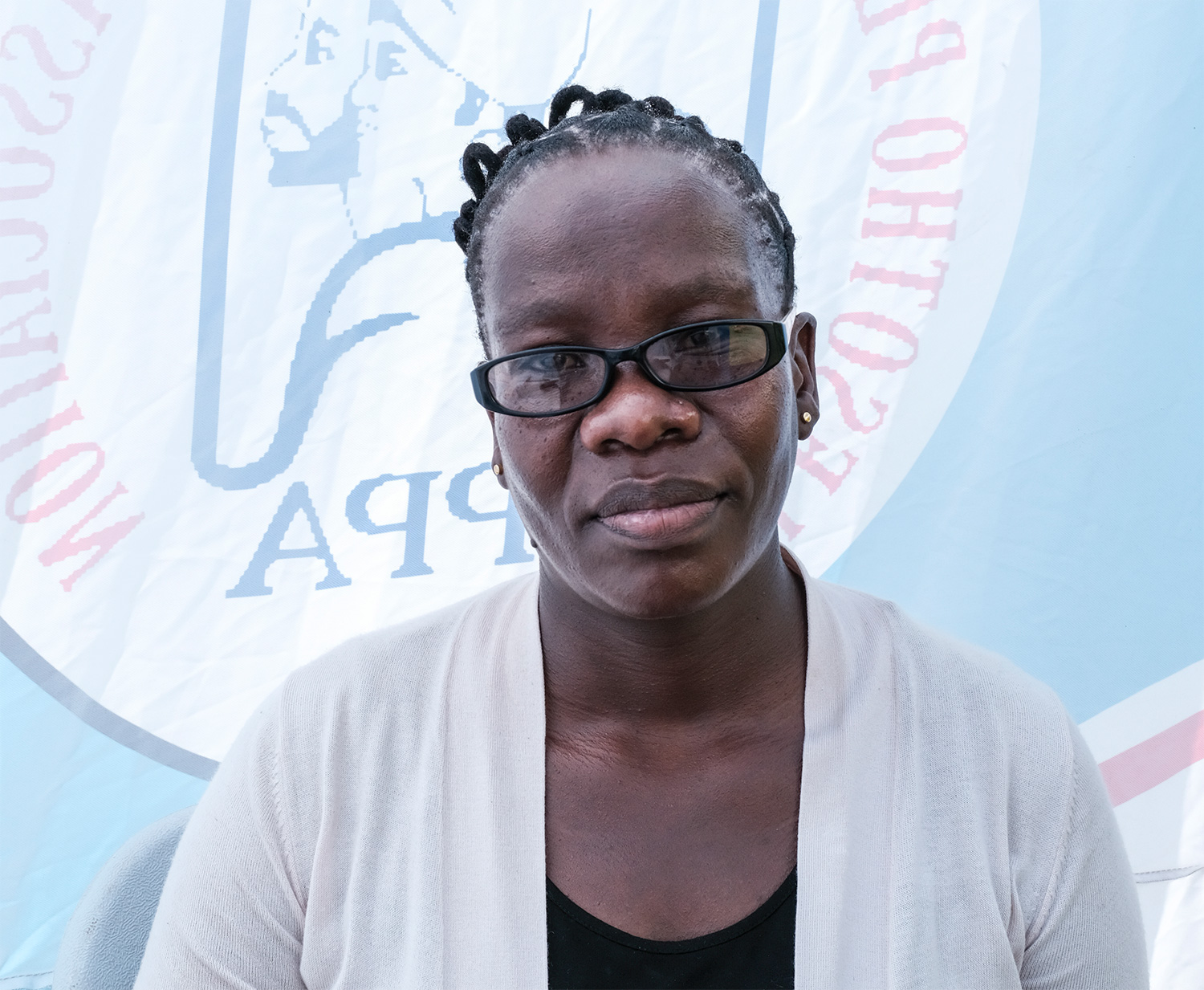
"Our being here is actually bringing the service to where they are and where they need it"
Bolelwa Falten in based in Losotho’s capital, Maseru, and has been working as a HIV counsellor for the better part of a decade, bouncing from different organizations depending on where the funding goes. Before she joined, IPPF nine months ago, 40-year-old Bolelwa worked with PSI Losotho. Now, she runs the “North team” as part of LPPA’s outreach program. She handles five different outreach posts and today, she is running the HIV testing clinic at one site. Bolelwa proudly takes us through the full range of tests and counseling services they offer there, taking particular pride in explaining how she follows up patients who test positive. She knows the beneficiaries appreciate the work – it’s something she sees every time she does an outreach day. “They no longer need transport money, time to get to the clinic. Our being here is actually bringing the service to where they are and where they need it,” she says. But quickly, she follows up, noting that in general, HIV and STI mobile healthcare services have been hit-hard by funding cuts in recent years.
Pagination
- Previous page
- Page 5
- Next page






